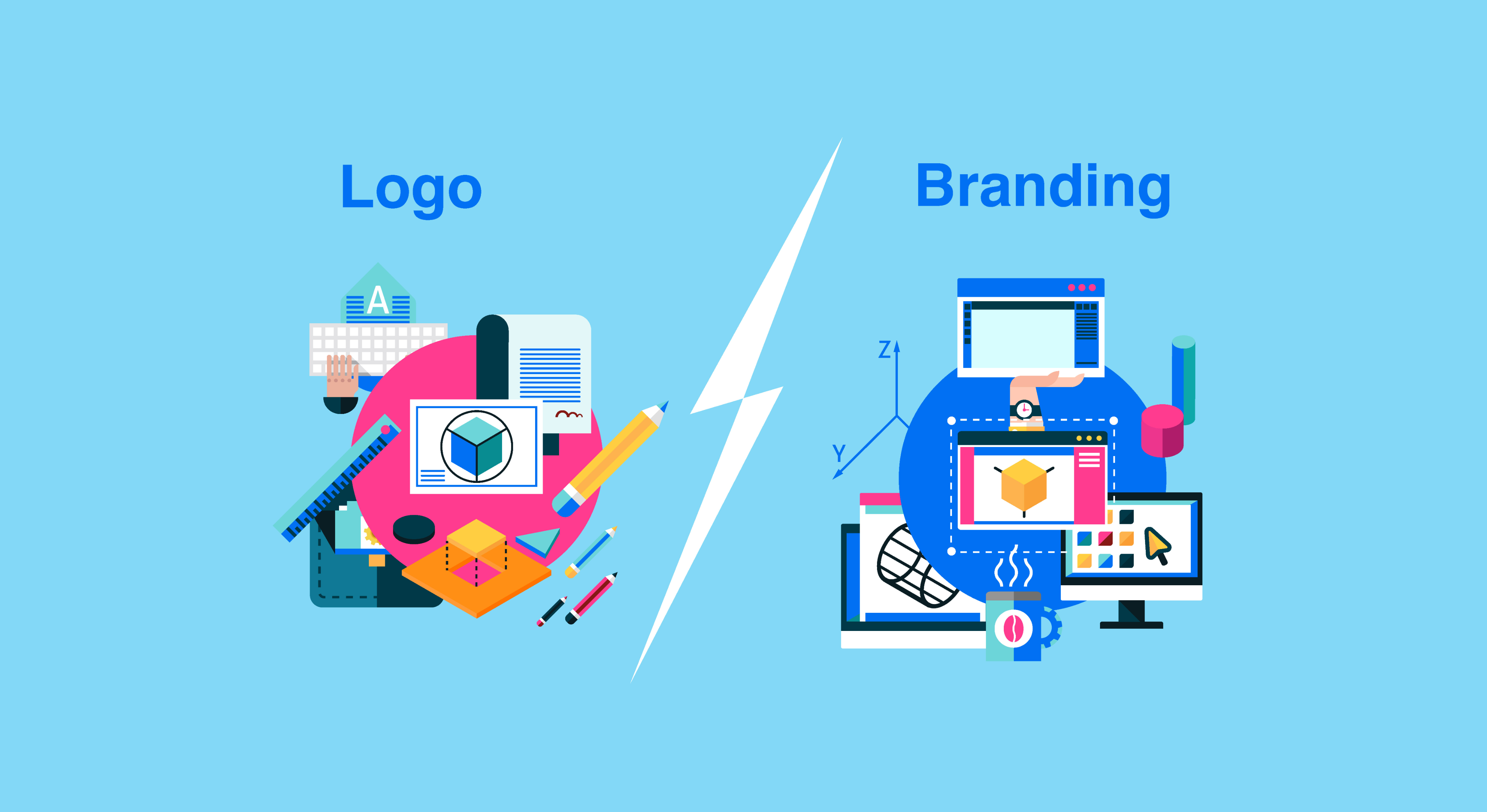
Logo Design vs. Branding: What’s the Difference?
There are two terms in business and marketing that are frequently used interchangeably but have separate meanings: Branding and logo creation While both contribute to the visual identity of a company, they serve different purposes and play unique roles in establishing a strong market presence. In this article, we'll discuss how logo design and branding complement one another to form an enduring brand name.
Logo Design: The Face of a Brand
A logo is a graphical symbol that represents a business or group. It serves as the visual symbol that quickly identifies and distinguishes a brand from its competitors. Logo design involves the creation of a unique mark or emblem that captures the essence of a company's identity, values, and offerings.
When designing a logo, several elements come into play. These include the choice of colors, typography, imagery, and overall composition. A well-designed logo should be simple, memorable, versatile, and scalable to various sizes and mediums. It should communicate the brand's personality, evoke positive emotions, and leave a lasting impression on its target audience.
Logos are often used on various brand assets such as business cards, websites, packaging, advertisements, and social media profiles. They act as a visual anchor, providing instant recognition and recall for a brand. Famous logos like the Nike swoosh, the golden arches of McDonald's, or the bitten apple of Apple have become iconic symbols that consumers associate with their respective brands.
Branding: The Holistic Brand Experience
Branding, on the other hand, encompasses the overall perception and experience that people have with a company. It explores not just the visual depiction of a brand, but also the psychological, sensory, and emotional dimensions of that brand. Branding is the sum of all interactions and touchpoints a customer has with a brand, from its logo to its customer service, messaging, values, and beyond.
A strong brand is built on a foundation of consistent messaging, values, and a clear brand voice. It establishes an emotional connection with its target audience and cultivates trust, loyalty, and advocacy. Branding helps differentiate a company from its competitors and influences customers' decision-making processes.
Successful branding involves creating a unique brand identity that encompasses the brand's mission, vision, values, personality, and positioning. It also includes crafting a compelling brand story that resonates with the target audience. Effective branding ensures that all communication and marketing efforts align with the brand's identity, creating a cohesive and unified brand experience across all channels.
Logo Design and Branding: A Symbiotic Relationship
Although logo design and branding are separate processes, they both contribute to the development of a memorable and enduring brand. An effective branding strategy begins with a logo, the visual representation of the brand. The logo encapsulates the essence of the brand and acts as a symbol that triggers associations with the overall brand experience.
On the other hand, branding provides the context and meaning behind a logo. It gives the logo life by communicating the brand's values, personality, and promise. Through branding efforts, a company can shape how its logo is perceived and ensure that it aligns with the desired brand image.
In conclusion
In marketing and brand development, understanding the distinction between logo design and branding is crucial for businesses seeking to establish a strong market presence. Although logos and branding go hand in hand, they each perform unique functions and add unique elements to a company's overall identity.
Logo design acts as the face of a brand, representing it visually and providing instant recognition. A successful logo design will capture the spirit of the company, convey its values, and make an indelible impact on its intended consumers. It serves as a powerful symbol that distinguishes a brand from its competitors and becomes an iconic representation of its identity.

The Importance of a Well-Designed Logo for Your Brand Identity
A well-designed logo is crucial for establishing a strong brand identity and making a memorable impression on customers

Understanding the Elements of Effective Logo Design
The elements of effective logo design: simplicity, memorability, versatility, relevance, and a timeless aesthetic.

The Visual Elements of Brand Architecture: Logo, Color, and Typography
The visual elements of brand architecture include the logo, color, and typography, which collectively represent the identity and personality of a brand.